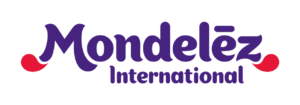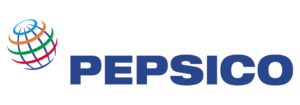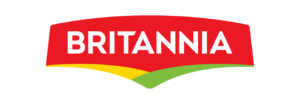Ecommerce is penetrating the Indian market so rapidly that Statista projected it to touch $200 billion by 2027. It has been there for a while, but the pace at which it has expanded in the past few years is remarkable. Covid era, especially, was a huge encouragement for the e-commerce sector, not to forget the afflictions caused. In the last two years, more and more people engaged themselves in online buying, wherein there was a tremendous spike in the newcomers’ segment.
There is no doubt that customer behaviour is changing, and this is the right time for major online product sellers to dive into eCommerce advertising. eCommerce advertising, simply put, is paid advertising, which can be both online and offline. Online properties include websites, search engines, social media, email, etc. Offline advertising is about using traditional methods of advertising like TV commercials, radio ads, and billboards. eCommerce advertising lies at the heart of product promotion strategies as it not only drives traffic but also keeps existing customers hooked to your product. Also, they are extremely effective when it comes to upselling and cross-selling.
The efficacy of a well-defined eCommerce advertising strategy can bring desired results for your online business. While developing one, here are a few things that you should consider:
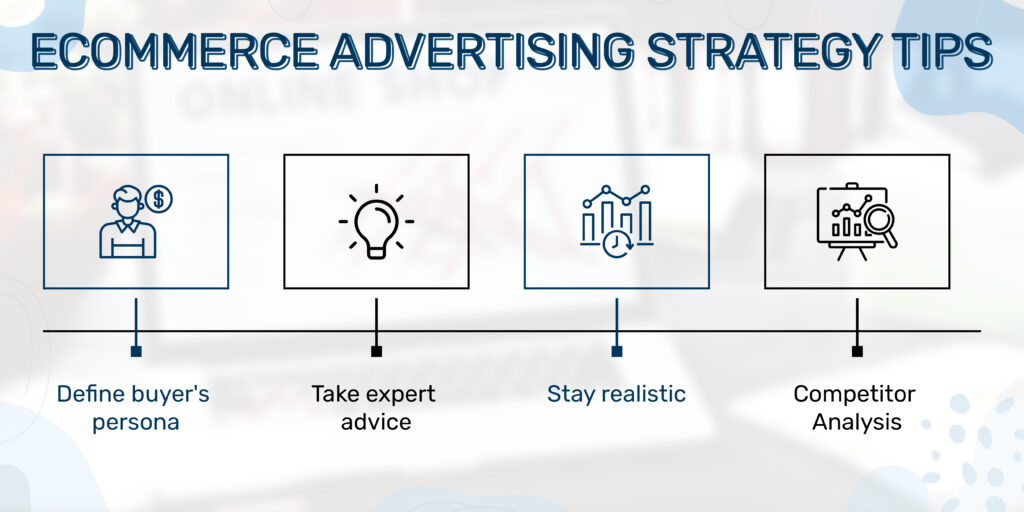
Table of Contents
eCommerce advertising strategy Tips and Tricks
Know your target audience
You best understand your target audience by defining a buyer persona, which is nothing but a fictional character representing your customer base. While creating a buyer’s persona, you list down the age, interests, demographics, geographies, gender, purchasing power, spending pattern, language, challenges they face, pain points, goals, and expectations. It is a very crucial step in developing an advertising plan for the reason that it will help stay focused on the potential buyers. You will not deviate or wander simply because your in-depth research introduced you to your potential audience.
Expert advice matters
Your business is at the nascent stage, and you need to formulate a plan to gradually grow and expand. No doubt you did your research on how to use social media, email campaigning, content optimization and other modes of promotions. But the nitty-gritty of using various promotional tools can only be explained by an expert. Remember, you learn a lot from an experienced online business owner. The internet can give you several links on ‘how to design an effective eCommerce advertising plan’ and ‘a list of things to do while developing an eCommerce marketing plan’, but what lies underneath those words can clearly be understood by indulging in a constructive conversation with an expert or an established entrepreneur. They can give you a step-by-step guide for developing a result-oriented eCommerce advertising strategy.
Be realistic
Once you know the journey to success of an established eCommerce business owner, it becomes pretty easy for you to analyze at what stage you are. After you know the amount of funding required, the types of ads you can run on various eCommerce platforms, the funds you need for advertising, the employee base you need, and the scope of product improvement, you can chalk out a realistic advertising plan for your business. Your aim to capture a significant market share will start with easy-to-implement, DIY digital promotion. As you scale up, you can modify your promotional policies and even hire experts to develop a concrete marketing blueprint.
Tread strategically
Now that you are fully aware of at what stage your business is, your every move will be strategic and well-planned, considering all the do’s and don’t’s. Here competitor analysis can be of great help. If you know your competitions well, you will also learn how to outweigh them. Studying the fundamental policies that it implemented to grow its online sales shall help you come up with the advertising ideas helpful enough to approach your target audience. Let’s say your competitor is an established shoe brand and leveraged the drawback of the sedentary lifestyle afflicted by Covid. It ran an entire campaign motivating people to adopt a certain level of activity in their lifestyle to feature its latest launch. And, there it is! He managed to convince his audience and eventually convert them into potential buyers. Run an extensive analysis of his campaign and understand how to encash the present and boost future sales.
Mission, Vision, Pricing, and Value Proposition
Customer retention, healthy seller-buyer relationship, growing clientele, expanding employee base, long-lasting investors association, new stakeholders stepping in – all these become achievable targets when you manage to develop a synchronized mission, vision, pricing, and value proposition statement. Ask yourself:
- What is the purpose of your business?
- Where do you want to see yourself a few years from now?
- What do your customers expect from you?
- What are your business ethics?
- What you don’t want to do?
There is always a scope for amending the goals and policies. You will also get the opportunity to constantly research, test, and refine the product features. However, the answer to the above-mentioned questions will help you develop a roadmap to success. You will be able to live up to your customers’ expectations and provide value for the price you are charging for your product.

Let us go through the journey to the success of a famous packaged food brand to get some clarity on the topic. This packaged food manufacturer was founded in 2005 with the vision of supplying preserved fruits and vegetables to leading retail chains, eCommerce stores, hotels, restaurants, and cafes. While envisioning crossing the borders to tap the international markets, its mission was:
- Providing the best quality products
- Cultivating farms using modern methods to increase the produce
- Interacting with the community of farmers to provide the solution to their grievances
- Educating farmers on new technologies, use of fertilizers, etc.
- Develop new recipes for both the Indian and international market
- Having a product development team working closely with quick-service restaurants and chefs to create a product as per their requirement
This brand left no stone unturned to capture a significant share in the market for packaged food. By accomplishing their mission, they were able to live up to their value proposition and mark a strong presence, especially on eCommerce portals. It made efficient use of advertising solutions offered by some of the biggest and most reputed online stores, which significantly helped this brand reach a larger audience, attract interested buyers, increase conversion, establish a relationship of trust and build a long-term association.
Now you have on hands a few considerations that can help you utilize the advertising solutions for bringing your product into the limelight. The coming section of the blog will talk about major eCommerce platforms and how beneficial product promotion has been using their promotional tools.
Major eCommerce platforms and its advertising benefits
Amazon
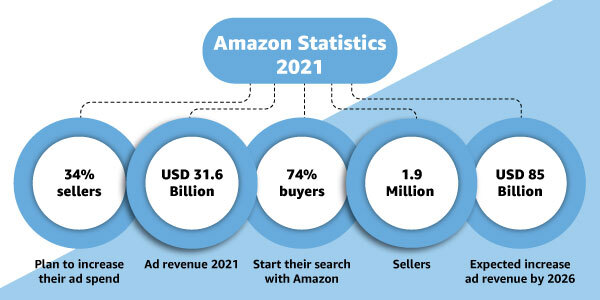
Amazon Advertising is an advertising solution that can tremendously increase product searches and visibility, when implemented effectively. It includes sponsored ads, product display ads, headline search ads, native ads, video ads, programmatic advertising, brand store, Amazon Media Group, discounts and offers, lightening deals, giveaways, free shipping, and promo codes. Using all these advertising tools can increase return on ad spend only if they are strategically planned and rolled out. Jungle scout 2021 Amazon Advertising Report, based on the data analysis of 560,000 ad campaigns and 3500 brands, agencies, and third-party sellers opting for rigorously advertising on Amazon, reveals that:
- Sellers were able to expand their outreach to customers willing to buy their products.
- Nearly 75% of the sellers used at least one type of Amazon advertising tool to reach potential customers
- Sellers were putting more money into Amazon Advertising, given its high payoff.
- Almost 34% of the sellers planned to increase their spend on strategic advertising in comparison to past few years
- For a lot of customers, Amazon became the search point to begin with online shopping. 74% of the customers visited Amazon first to look for the product they plan to buy.
- The share of Amazon advertising in the global digital advertising sector will grow from 8% in 2020 to 13% in 2026.
Flipkart
With more than 80 million active users and 15 million daily users, Flipkart has managed to capture the badge of one of the most established and popular eCommerce stores in India. Noteworthy here is that this platform is known to be a boon for small and medium-scale industries. Here is an example of how Flipkart helped a small-scale business owner grow and reach out to the buyers countywide.
A small scale-seller of cotton pads and home composting pits manufactured by rural women saw his business picking up. But the major obstacle in his path of expansion was a small team and limited resources. His association with Flipkart was a great push for his business as he could create an advertising account to run a campaign for promoting his products and keep track of his business progress and product performance by skimming through reports generated through Flipkart’s in-house analytics platform.
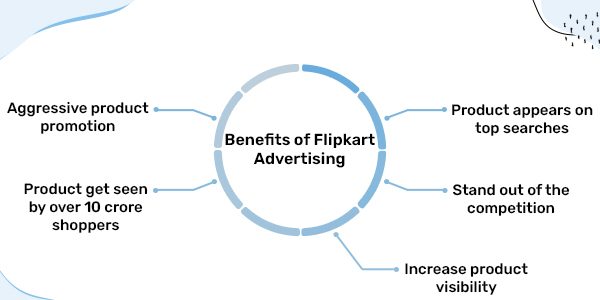
This success story of this small-scale business owner in Bangalore can lead sellers to understand the meaning and motive of Filpkart advertising. It is performance-based marketing that provides end-to-end advertising solutions comprising of Product Listing Ads and Product Contextual Ads to enable sellers to increase their engagement with their targeted customers. This can be best explained using work from home scenario that became prevalent in the past two years. According to the studies conducted in 2021, 88% of the Indian workforce preferred the flexibility of working from home. With this trend becoming popular, audiences were aggressively searching for products that would make work from home more comfortable. There was a surge in the demand and purchases of laptops, smartphones, iPhones, laptop tables, laptop accessories, etc. The was a favourable opportunity for the sellers of these products to run a comprehensive advertising campaign on Flipkart to generate sales.
Grocery Shopping – A Major Shift From Physical to Online Store
If we go a few years back, recall our mothers going to the nearby fruits and vegetable sellers to pick a fresh bunch for home. Also, their monthly visit to the grocery shop and carefully selecting the products while checking their’ use before date’. Now, witness the switch! Grocery shopping gradually evolved, and households turned to buying food items – both perishable and non-perishable – online. Online grocery stores became famous, Bigbasket, Blinkit (formerly Grofers), Amazon pantry, and Swiggy Instamart, to name a few. The footfall of buyers on these platforms only grew because of their agility towards convenience. And then came the covid era, when people preferred staying at home to escape the virus. During these years, the best answer to their purchasing of foodstuff was the online food stores. A trend that picked up in the past few years, especially due to the pandemic, has now become so prevalent that people just click, read reviews, add to cart, swipe, and pay. A study by Global New Wire shows that, in the financial year 2021 The Indian Online Grocery Market made USD 3.95 Billion. It is projected to grow at a compound annual growth rate of around 33% and reach USD 26.63 Billion in 2027.
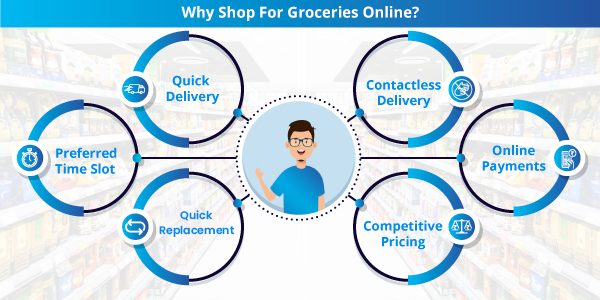
What is the reason that people got addicted to online grocery shopping?
- Quick delivery like delivery within 10-20 minutes
- Delivery at preferred time slot
- Quick replacement of damaged products
- Instant delivery of missing items
- Opportunity to try new brands based on the rating and reviews
- Contactless delivery
- Online payments
- Competitive pricing
FMCG manufacturers are using the prevalence of e-grocery stores to their advantage and exploiting their in-house advertising tools to promote their products. Some of the assets that they provide for increasing product visibility and conversions are:
- Banner ads to showcase the range, discounts, new launches, and product features.
- Category banners to introduce customers to the new categories, new products in the category, discount deals, etc.
- Trending offers that show a certain percentage of discounts that a brand gives on its product purchase
- Ads showing emerging brands, lightening deals, brands that have reduced the prices of the products, cashback on paying through e-wallets
- Video ads that walk customers through products features, main ingredients, uses, features and benefits quickly
- Push notifications as a means of communication
- Sampling to spread awareness and gather reviews
Conclusion
Let’s conclude the entire blog with a case study. A UK-based tea brand wanted to create a strong presence on major e-commerce platforms and become known among its key competitors in the Indian tea market, which is expected to grow at a CAGR of 4.2% between 2021 to 2026. It meticulously learned about the advertising resources on various e-retail stores and used them collaboratively to run promotional campaigns. However, for this company, having the content that tea buyers can relate to was as important as rigorous campaigning. Optimized product content and images went hand-in-hand with advertising on major e-commerce sites. Soon, it became an established player in the Indian Tea Industry. Attention-grabbing here is that even when this seller is now giving a tough competition to its counterparts, its efforts have not slowed down and as a result, its online sales have gone up tremendously.
How Paxcom contributed to the growth of its clients on E-commerce store?
Paxcom India Pvt Ltd is proud to have a team of E-commerce analysts and content creators who have end-to-end knowledge advertising on online stores. Where content creators know exactly what kind of content, including product details, company profile, copies, images, and banners will attract buyers, our eCommerce analysts have a stronghold over running campaigns and social media ads. We create, target, and scrutinize, and finally extract the figures that are evidence of progress. These numbers also make us aware of the scope of improvement.






